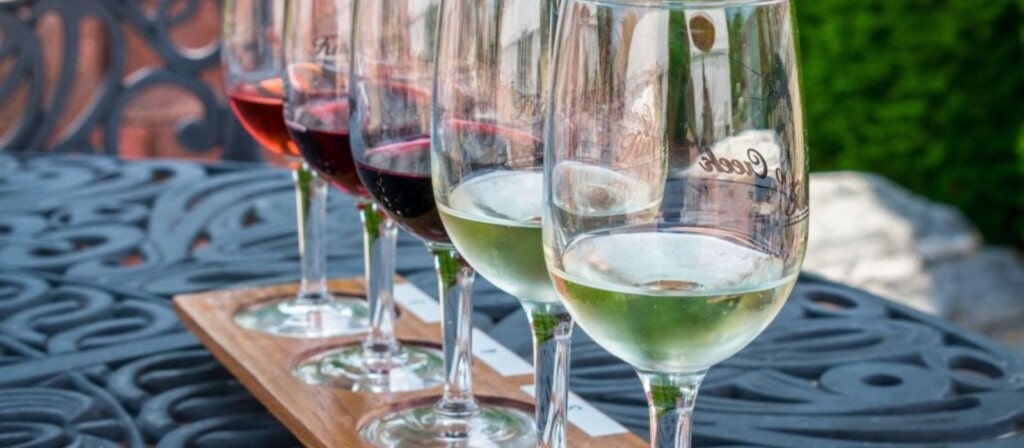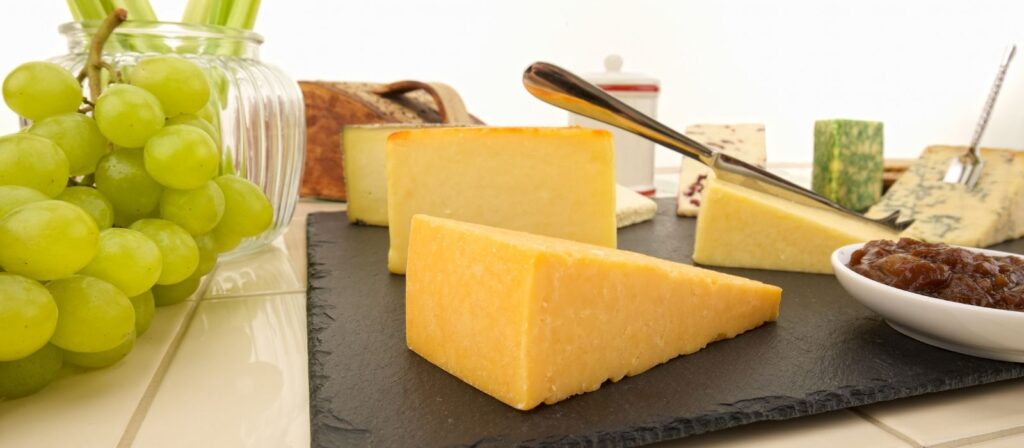Disclosure of Material Connection: Some of the links in the post above are "affiliate links." This means if you click on the link and purchase the item, I will receive an affiliate commission. Regardless, I only recommend products or services I use personally and believe will add value to my readers. I am disclosing this in accordance with the Federal Trade Commission's 16 CFR, Part 255: "Guides Concerning the Use of Endorsements and Testimonials in Advertising."
Okay, so now that you’ve tried some of the most popular white wines, it’s time to see what other white grape varieties are available. Thankfully for us there are a lot! Some will remind you of wines you’ve already tasted such as a good Chardonnay and others will be unlike any white wine you’ve tasted before. They will all be worth it however, and I recommend that you give any of these a try if you get a chance. Check out these six white wine grapes that you may never have heard of but definitely need to try below.
As with the six red grape varieties, I will give you a very brief introduction and then discuss the flavour characteristics and the food pairings that should accompany the wine. I’ll even throw in a couple of recommendations to suit every budget too.
Albariño
Though uncommon, Albariño is growing in popularity amongst fans of white wine. It’s mainly grown in Rias Biaxas in the northwest of Spain, but you’ll find plantations in Portugal and California too. It is rare outside of the Iberian Peninsula but don’t let that dissuade you from trying this light and refreshing white wine.
This is an incredibly complex wine which is hard not to like. You should expect to taste lemons, peach, grapefruit and nectarine on the palate, and you might even get hints of minerality too. You’ll often find Albariño aged in oak so you might also get hints of vanilla. It is often light bodied, relatively dry and very acidic! Don’t worry about decanting it and drink within a couple of years to get the very best out of it.
Albariño pairs outstandingly well with a range of seafood including prawns, shellfish and lobster.
Albariño to try:
- Paco y Lola Albariño 2018 – Rias Baixas $18 – $22
- Do Ferreiro Rebisaca 2015 – Rias Baixas $32 – $36
- Eighty Four Albariño 2018 – California $32 – $36
Grüner Veltliner
Grüner Veltliner is another very complex wine that can come in a range of styles from several eastern European countries. It’s widely grown in Austria and is Austria’s most important grape variety. It’s easy to see why as, with notes similar to Sauvignon Blanc, it’s very hard not to like and you’re guaranteed to find a style that will suit you.
When young, expect to taste notes of apples, pear, lemon and Apricot, though herbaceous notes and white pepper can also come through on the palate. It ages well so you can expect to taste notes of honey, cream and toast in older vintages too! The body of the wine can range from light to full, but it is almost always acidic.
Grüner Veltliner pairs well with pork, chicken, oysters and goat’s cheese so there’s plenty to try this wine with!
Grüner Veltliner to try:
- Broadbent Grüner Veltliner (1 liter) 2018 $10 – $12
- Weingut Hirsch Kammern Grüner Veltliner 2017 $25 – $28
- Weingut OTT Grüner Veltliner Spiegel 2016 $57 – $63
Picpoul
Picpoul (sometimes known as Picpoul Blanc) is a little-known grape variety that is rarely grown outside of France, but is steadily growing in popularity. It’s largely grown in the Languedoc-Roussillon region in the south of the country and if you see “Picpoul de Pinet” on the label then you’re on the right track. Picpoul translates into “stings the lip” in English so that should give you an idea of its acidity!
Picpoul wines often taste of green apples, lemon and grapefruit. It’s almost always dry, has a light body and should be drunk immediately.
As Picpoul largely grows near the coast, it naturally pairs well with seafood so try it with sushi or even fried calamari.
Picpoul to try:
- Jadix Picpoul de Pinet 2018 – Languedoc-Roussillon $12 – $14
- Chateau St. Martin de la Garrigue Picpoul de Pinet 2017 $20 – $23
- Cellars 33 Picpoul 2018 $23 – $27
Sémillon
We’re staying in France for this next grape, but this is much more well known. Sémillon is the key grape for almost all of France’s sweet wines and what a grape it is! It’s mainly grown around Bordeaux and if you’ve ever tried the stunning dessert wine “Sauternes” then the chances are you will have been drinking Sémillon. The grape itself is susceptible to Noble rot which is a harmless grey fungus that infects the grape when it is ripe and, when picked at the right time, produces wines that are particularly sweet. In Bordeaux, you’ll often find Sémillon paired with Sauvignon blanc for added flavour, but the best examples of Sémillon on its own can be found in Clare Valley or Barossa Valley in Australia.
Sémillon will often have flavours of lemon, peach and chamomile though the flavours will vary depending on the region. In Sauternes, expect high acidity with flavours of vanilla, coffee and toast combined with the citrus notes. The citrus notes and acidity are often multiplied when Sémillon is mixed with Sauvignon Blanc. In Australia you’ll often find Sémillon to be medium bodied and range from citrus to vegetal notes.
You want to be pairing Sémillon with chicken, pork, sweet desserts and seafood.
Semillon to try:
- Clos des Lunes Lune d’Argent 2015 – Sauternes $18 – $22
- Chateau Suduiraut Sauternes 2016 $67 – $73
- Elderton Golden Sémillon (375ML half-bottle) 2019 $20 – $24
Savatiano
Savatiano is the widest planted grape in Greece and though it isn’t as popular as other grape varieties, it is growing in popularity. It is often the constituent grape in Retsina, the ancient wine that was exposed to tree resin (usually pine) in order to give it its unique flavour. This “resonated” flavour repulsed the Romans and may have even killed a Nordic king or two! But why, you might ask, are you telling me this when you’re trying to recommend a grape that I should try? Well, Retsina is made very differently these days and is well worth a try. The most important reason, however, is because when Savatiano is made in a certain way it can taste like a very good Chardonnay. it’s also easy on the wallet or purse too.
Any good Retsina will give you citrus notes, particularly lemon and grapefruit. You may also get some earthy notes and even some herbal flavours such as mint and thyme. If you’re more of a Chardonnay person then look for Savatiano on the label. Here you’ll hopefully get good notes of grapefruit, lemon, honey, cream and even caramel.
Savatiano pairs well with spicy and marinated meats, particularly from the Caribbean or Mexico.
Savatiano to try:
- Gaia Retinitis Nobilis Retsina $18 – $20
- Mylonas Wines Sterea Ellada Savatiano 2014 $14 – $17
- Domaine Papagiannakos Savatiano Vareli 2020 $15 – $20
Torrontés
Last but certainly not least is Torrontés, an outstanding grape from Argentina. Torrontés is a group of three varieties: Torrontés Riojano, Torrontés Sanjuanino and Torrontés Mendocino though Riojano is usually seen as the best expression of the grape. If you pick up a bottle and the label only refers to “Torrontés” then you will likely be drinking Riojano. It’s relatively popular and widely planted across Argentina, particularly in the high-altitude vineyards of Salta in Cafayete.
Torrontés is often very floral on the nose with good notes of peach, apricot and melon. It’ll often be dry (though smell sweet), have a medium body and have medium acidity. It pairs particularly well with spicy food from a range of cuisines and is also a good match for vegetarian dishes.
Be careful not to confuse this gape with the Torrontés grape variety in Spain, they are very different and if you find yourself drinking Pisco, the national spirit of Chile then you’re also drinking Torrontés Riojano!
Torrontés to try:
- Amalaya Blanco 2017 $9 – $11
- Zuccardi Serie A Torrontes 2017 $14 – $17
- Nieto Senetiner Torrontes 2016 $18 – $22
So, there you have it. Six white wine grapes that you may never have have heard of but should definitely try. Like the reds, you’re going to find some amazing white wines that you’ll keep going back to and there may even be some that become firm favorites, allowing you to explore further grapes from that country. If I was to choose my favorite out of those listed above, then I’m going to have to go for Semillon because I’ve got a sweet tooth. Savatiano would come in a close second too because I’m partial to a good Chardonnay!
Remember to always drink in moderation and we’d love to hear your views on the grape varieties above. Got any suggestions of other grapes we should try? Be sure to mention them in the comments too. Thanks for checking our list of six white wine grapes you need to check out!







